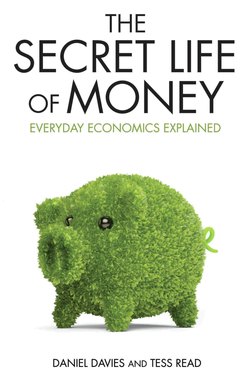Читать книгу Secret Life of Money - Everyday Economics Explained - Daniel Davies - Страница 11
ОглавлениеWHO ARE RIP-OFF LABEL JEANS ACTUALLY RIPPING OFF?
Designers of the high-end label jeans, clothes, bags, etc. that we apparently love to buy make their income from designing. This means that, if someone, most likely someone in Asia, copies their design and then we buy this product instead, we are depriving the designer of their rightful income, right? This is the standard tale told by the ‘don’t buy fake jeans’ brigade; and clampdowns on such fakery are regularly publicised in the media.
THE DESIGNER WEARS PRADA
But if we unpick this story a little more, we see some hidden complexities. The designers of the product that is being copied have already garnered their income from their design because the design has already been sold at the original high price. That is how it became a high-prestige product that became a target for copying. However, the designer’s income from the product’s design is usually hard to precisely pin down because the designer is usually a paid employee of a company, such as Prada or Gucci, and the (often monster) profits flow not to the designer, but to the company owners or partners.
WORKING FOR DA BOSS
These owners may be the original founders of the business, they may be members of the public if it is a traded company, they may be pension funds and life assurance companies, or they may be the designers themselves. The larger the company, and the larger the global impact of the brand, the less likely it is that the designers own any significant part of the company.
Therefore, where the designer is a paid employee drawing a salary from the company – which may be supplemented by bonuses in cases of the company achieving financial success – the designer has already been paid for their design. The excess profits generated from a design catching a mood and becoming a copied trend were never due to flow to the designer, but to the owners of the company.
BREAKING DOWN THE FOODCHAIN
For any mass consumer product, whether jeans, or jumpers, or shoes or headphones, the manufacturing process involves a great number of people in manual labour as well as some individuals sitting pretty, designing in London or New York offices. And so for any mass consumer product, all the people in the foodchain who actually make the product were always paid the same low wage, and very often the wages and conditions in the chain making ‘genuine’ branded products and those making the ‘counterfeit’ products are interchangeable.
WHAT MAKES FAKE FAKE?
In what sense are ‘counterfeit’ jeans counterfeit? They’re still jeans. Does the fact that they are not made by the official branded factory make a difference to their actual quality as jeans? Industry experts would argue that there certainly is a difference, and personal experience would suggest that there may be a difference, but not such a difference as is reflected in the price differential. £20 ‘counterfeit’ jeans may be a little less well made than ‘genuine’ £150 jeans, but does the quality differential amount to £130? Almost never. What explains the difference then? The excess profits made by the owners of the company when you choose to buy a branded product. The question at the core of the matter is: which jeans are the rip-off? The ‘rip-off’ jeans or the ‘genuine’ jeans?
DR DRE
The answer to this of course varies from case to case – if you pay hundreds of pounds for Dr Dre headphones, you are buying both a well-made product and a high-prestige brand. The tricky task is to separate how much each element is worth to you. Are you really that shallow that the logo of a brand name alone is worth the cost of a meal out? Possibly so, many people are (apparently, they call it being fashionable). But if you aren’t, then, as with almost any consumer product, you can obtain an equivalent product with almost identical technical specifications and quality of manufacture for substantially less.
DR DREADFUL
What happens to people who are that shallow but don’t have hundreds of pounds to spend on headphones? That is when the problems start, because these are the types who go out and buy the fake Dr Dre headphones in a dodgy streetmarket. For, unlike our example of £20 ‘fake’ jeans, which still by and large operate reasonably functionally as jeans, the £5 fake Dr Dre headphones are instead not only unlikely to work well as headphones, but also likely to be very poorly made, highly breakable and worth far less than the apparently ‘bargain’ price of £5. In these cases, it is the customers who are being right royally ripped off by the rip-off headphone manufacturer.
Dr Dre himself, however, and his monster profits remain intact, as everyone with even half a brain can see the ‘rip-off’ headphones are indeed rip-offs.
